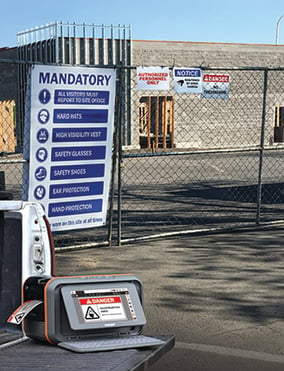Big Tech Plans to Revolutionize New Construction
03
February,
2023
2 MINUTE READ

In a home, people make up the heart; now, forward-thinking companies such as Amazon, Apple, and Google want to make up the brain. Artificial intelligence, virtual reality, and other technology trends are expanding from smart phones to smart homes. Tech giants have set their sights on residential real estate and the construction industry. This uniting of tech brain and construction brawn is expected to help revolutionize a technologically deficient construction industry for safety and efficiency.
"(Tech) companies are advancing a variety of construction methods to build ambitious development projects that re-imagine everything from the wood used in homes to the ways we think about private vs. communal space," industry researcher CB Insights wrote in its recent report on the future of housing.
Companies are digging deeper, spawning ideas and working to help expand technology in the construction industry to get homes built with tech integrated from the ground up. Just like solar and energy-efficient materials are becoming regular new-home construction features, soon technology will be a built-in amenity. Part of that process is to get the construction industry online and caught up technologically so that it can go forward with futuristic plans.
Turner Construction earlier this year, took home a top national safety award from the Associated Builders and Contractors in Memphis, Tennessee. The company says it is working hard to take advantage of opportunities that are available without losing sight of what the future may bring. "A key element of our company vision is to develop and embrace emerging technologies and processes," the company said in a statement. Turner's executive vice president, Pat Di Filippo, attributes the company's successes and ability to meet challenges to the adoption of lean practices. "Lean is not just a process, it is a guide to treating people well on the job," he said.
Hazard Mitigation Strategies
The United States continues to be a global leader in science and technology. However, new technologies are still wrought with challenges. As infrastructure gains investments and partnerships, standards and codes for safety will also reflect changes made that come with improvements and innovations. The American National Standards Institute (ANSI) and the National Institute of Standards and Technology (NIST) recently held discussions on codes and standards and the organizations' roles in supporting strong, practicable, and resilient twenty-first century infrastructure solutions.
At the World Standards Day event in June 2018, Ryan Colker of the National Institute of Building Sciences said there are financial benefits of early hazard mitigation. He said investing in mitigation reduces future federal obligations when a natural disaster strikes and that state and local governments should adopt and enforce the latest building codes. ANSI Chairman of the Board Russ Chaney agreed and spoke on the importance of public-private partnerships and up-to-date standards and codes to move improvements and innovations forward.
 Smart Safety
Smart Safety
Carbon fiber materials, cross-laminated timber, and productivity monitoring are just a few ways technology is improving the construction industry in the office and on the jobsite. Enterprises in construction are boosting Environmental Health and Safety programs through information technology and modern safety best practices.
Data is driving change to create more efficient opportunities for training and safety education. A recent Pew Research Center report shows about 77 percent of Americans own a smartphone. With more mobile opportunities, employees can consume key safety training content through easily downloadable information. Jobsite construction workers can gain a better understanding of how modern methods of construction perform. For example, EHS managers can now send an employee a link to gain quick access to jobsite safety tips. Employers can provide instructions on completing new tasks and warn of potential hazards through up-to-date educational materials and informative signs and labels. For even faster results and unique applications, companies have access to portable and innovative industrial labeling machines. Through these tips and more, construction industry professionals can stay on top of safety and technology trends, and reap the rich rewards of technology.
RELATED RESOURCES

NYC Plans to Remove Old, Misleading Fallout Shelter Signs
Signs that were posted during the Cold War are still up in places around New York City. These signs are old ...
Read
Harwood Grant Deadline Soon
Nonprofits have until July 20 to submit applications for a piece of $11.5 million in grant funding from the ...
Read
Tips to Maximize Control Panel Safety
Never underestimate the power of electricity. While it is easy to take energy for granted, there are many ...
Read.png)


